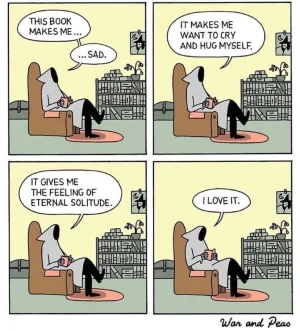@GRiMM
Some of these may be helpful...
The Art of Spiritual Protection:
17 Ancient Shamanic Techniques for Clearing Negative Energy and Psychic Self Defense
BY ITZHAK BEERY
1. Smudging
Smudging with smoke composed of a variety of plants, herbs, resins, and minerals can be an exceptional energy purifier for getting rid of negative energy from your home, office, or body.
Spiritually, smoke summons helping spirits; it represents the transformation from solid matter to spirit, as the smoke ascends and disperses into thin air.
Physically, smoke captures negative energy particles in our illuminated body or habitat spaces and in hard-to-reach places, then removes and transports them to the heavens to be dispersed.
A recent article in the
Journal of Ethnopharmacology notes that smoke can disinfect the air from a variety of dangerous airborne bacteria, hence it has considerable healing properties.
The most popular plants for smudging and removing negative energy are white sage, sweet grass, lavender, rosemary, valerian root, and other aromatic plants or trees, like cider, pine, palo santo, and copal.
For body purifications, start from your head and go down to your toes.
You can disperse the smoke with your hands or with a feather through an open window or into a candle flame.
You can also scatter these plants and minerals around the house for psychic and spiritual protection against evil spirits.
2. House Energy Cleansing
Clearing bad air, negative energies, ghosts, psychic attacks, and good and bad spirits from the house and workplace is as important as clearing one’s energy field.
Often it is important to clear the owner’s energy right after you clear the space.
This ceremony for clearing negative energy from the home uses almost the same tools as in
La Limpia.
The premise of this common practice in South America is that humans, animals, or any object leave energy footprints wherever they go.
Sometimes deceased people’s spirits still stay at the place of their death, as they are not willing to move on.
Negative energy is heavy, stagnant energy that stops the flow of life; it sinks down.
If not cleared, it can bring bad luck, fear, sleeplessness, and sometimes violence to the people in the house or building.
I have seen a lot during the years I have practiced this form of clearing negative energy from homes and spaces—from an old sailor who hanged himself in the attic of an Amsterdam warehouse to a group of electronics thieves in a store in Queens; from an abusive Middle Eastern husband to an uncooperative Indian wife; from a murdered young woman’s ghost that crossed my room at 2 a.m. in Ecuador to a loving old couple who lived a full life in Queens, New York; from a killing dungeon in a Lower East Side restaurant’s basement to an unsuccessful factory in Long Island; from a cheating famous Brazilian healer to a Middle Eastern woman who vowed to ruin my client’s business.
All past events that were later confirmed.
And the effects of the clearings brought back harmony and good luck and changed people’s life.
The shaman’s role is to shake and invigorate these negative energies to move them out of the house and return the house to
harmonious balance and flow. Throughout the ceremony the shaman chants or whistles an
icaro (soul song, or prayer).
If a house has multiple floors, the shaman starts from the bottom and moves up, getting rid of the negative energy and invoking spiritual protection.
Windows are open to let the negative energies and smoke out.
Here are the instructions:
1. As you enter the house, stop, gaze at the surroundings, breathe in, and then close your eyes.
Ask your spirit guides to inform you on what is going on in the house.
Wait a few minutes for a vision or answers.
Sometimes spirits and events will be shown to you as holograms.
Pay attention and go to the places your visions lead you when you do these clearings of negative energy.
2. Start by setting up your altar, light a white candle, and call the four directions and your spirit guides (I usually call my teachers’ spirits in this and the other world) for spiritual protection and for help with healing intention and prayers.
3. With a bottle of sugarcane rum (
trago) walk all around the rooms and blow (
camay) through your mouth (preferred) or a spray bottle in the corners, under the bed, closets, kitchen, drawers, and behind the doors, in all the hard to reach places where stagnant energy lies.
The trago’s alcohol molecules neutralize the positive ions in the air to create a more balanced environment and to clear negative energy.
4. Light a sage stick (or any other plant), walk around the house, and fan the smoke where there is stagnant energy.
(You can use your hands or feathers.)
The smoke removes old negative energy and kills airborne bacteria.
5. Walk around the house and vigorously
click two healing stones with your hands to shake up old energies.
You can also clap your hands or use a rattle.
6. With a bottle of Agua de Florida walk all around the rooms and blow through your mouth (preferred) or a spray bottle in the corners, under the beds, in closets, in the kitchen, in drawers, and behind the doors, in all the hard to reach places, to bring good energy and spiritual protection.
7. Walk around the house and puff tobacco with the blessings of spirits.
8. Walk around the house and ring a high-pitched bell to harmonize the house vibrations.
9. Gather with your client around the altar.
Hold hands and pray with intention.
10. If you were called because of relationship and love issues, put red, pink, and white rose petals on the bed after the cleansing.
Ask the owner to have fresh roses by the bed and to take a rose petal (boil them for five minutes) bath before going to bed.
3. Sea Salt
Sea salt is a natural detoxifier and absorber and clearer of negative energies from your skin and your environment due to its hygroscopic ability.
It is used in almost all healing traditions around the world.
Rub your hands and your entire body thoroughly with salt, or take a handful of sea salt and add it into a bath.
Place small bowls with sea salt and water (no need to change the sea salt, just replenish the water) in the corners of your house, under the bed, or in your office.
You can also use sea salt without water for continued psychic protection.
You can also fill up a bowl of water, add handful of sea salt, and dip your hands in it for a few minutes.
4. Coal
Coal absorbs and removes negative energies and is also perfect against bad dreams or nightmares.
Grind the wood coal, preferably from a ceremonial fire, wrap it in natural fabric, and tap it over your body or put it under your pillow to help you sleep as it absorbs reoccurring bad thoughts and nightmares, contributes to your spiritual protection, and protects against psychic attacks.
5. Baths
Take a handful of sea salt and pour it into your bathtub and lie in it for twenty minutes.
You can also add a spoonful of baking soda.
If you feel strong negative energies around you, take a bath with sulfur (put sulfur sticks or powder in water overnight then pour the water into the bath).
For heavier attachments or psychic attacks, add six drops of ammonia to the water.
Boil a bunch of rue leaves for five minutes and add them to your bath.
Some shamans recommend taking beer baths.
If you do not have a bathtub, you can fill a bucket with water and follow the following practice for spiritual protection.
Pour water using the palm of your hand, six times over your left shoulder, six times over your right shoulder, and six times over your head.
Do it with prayers, pure intention, and concentration.
Repeat it on three consecutive days, starting on Monday.
You can also dip your hands or your feet in a bucket of water with sea salt.
Do not soap or shower after the bath.
6. Sweating It Out
Spending time in a sweat lodge, steam room, or a sauna can
remove toxicity and purify your body, emotions, and soul.
Sweating clears the negative energies on the surface of the skin and in the deeper tissues pour out of the body.
7. Blowing of Sugarcane Rum
Put a small amount of sugarcane rum (
trago) in your mouth, under your tongue, and blow it out forcefully on yourself, on others, or around the room in a strong intentional blow.
It needs to be sent as a strong but soft mist.
It will ionize and rebalance your energy body and surroundings.
8. Feathers
Use feathers, preferably condor, eagle, or wild turkey, to remove stagnant negative energies.
Start at the crown of your head and move all the way down to your feet.
Let the feather guide you to feel energy blockages just like dowsing; feathers represent the element of air and the clearing wind.
9. Stones
Brush healing stones, preferably black lava stones, over your body to absorb negative energy and create a psychic protection shield to guard against psychic attack.
You can also hold a stone in each hand or put them in your pockets for grounding.
For spiritual protection and getting rid of negative energy from your home and office, clap the stones around the room (or rooms), especially in the corners where stagnant energy congregates.
After using them dip them in sea-salt water or blow sugarcane rum on them to cleanse them.
10. Amulets
Amulets can be a piece of jewelry worn for spiritual protection or an object made from stones, seeds, metal, or coins.
Amulets sometimes contain words or prayers.
They are worn and are created to protect the wearer from psychic attacks, harm, and evil spirits.
They are sometimes blessed and imbued with
the power of a shaman.
Wear a protective charm, pendant, or bracelet on the left hand, the path to your heart, or over your heart.
11. Mirror
Wear a mirror or any reflective metal surface over your heart center to deflect negative energy or a psychic attack back to the aggressor and to disperse it into the void.
12. Plants
Plants absorb and clear negative energy and produce negative ions for air purification.
Place various plants with large green leaves—such as aloe vera, banana, arrowhead, evergreen, dumb cane (
Dieffenbachia), geranium, and dragon plant (
Dracaena)—around the house and on windowsills for spiritual and psychic protection.
A very important plant in South America is rue, also called ruta or ruda (
Ruta graveolens).
It has a very distinct repelling smell and beautiful small yellow flowers that need lots of sun.
Plant it in the entrance to your home and place it on your windowsills.
It is believed to shield the house from jealousy and envy of neighbors and passersby.
Tap a small branch of rue all over your client’s body; if the plant dries or dies, it is a sign that your client possesses large amounts of bad energy.
Boil a branch and add it to your bath or spray or clean your house with it to get rid of negative energy in your home or self.
13. Nature
Spend some time in nature for spiritual protection.
It contains and emits negative ions, which counter the positive ions we are surrounded by in our homes and offices in our digital society.
Walk barefoot as much as you can, hug a tree, or sit with your back to a tree trunk; it will absorb your negative energies.
Some people find it helpful to be buried in soil or sand for a few hours or overnight; the soil clears your negative energy and grounds you.
Stay by or swim in a lake, river, waterfall, or ocean.
Encase your body with plants and green leaves, as they repel evil spirits and confer psychic protection.
You should also wear green clothes for the same reason.
14. Handshakes
Do not shake hands with people who you believe are angry and depressed as they are carriers of negative energy.
With more than a million nerve endings and receptors in the palm of the hand, shaking hands acts as an energy transmission between two people and could be contaminating.
Sticky, sweaty palms can indicate an emotional nervousness, fear, and disturbance.
15. Sulfur
Sulfur—a foul and smelly crystal for psychic and spiritual protection—removes emotional problems, hexes, and attachments and frees one from enemy attachment cords.
You can roll sulfur sticks over your body, preferably on your bare skin, from head to toe.
You can also soak sulfur for twenty-four hours in water and add it to your bath.
If you do not have sulfur sticks, use sulfur powder encased in a fabric pouch and tap it on your body.
Sulfur can also indicate signs of possession.
Hold a sulfur stick in both hands.
If it breaks, it is a sign of possession.
Bring the stick to your ears and if you hear cracking and hissing sounds, it is a sign of emotional disturbance caused by entities.
16. Protection Stones
There are many stones and crystals for spiritual and psychic protection that can absorb, repel, or clear negative energies.
Stones and crystals such as black obsidian, black tourmaline, black onyx, and apache tears can transmute good energy.
Wear them around your neck, carry them with you, or place them around you in your home or office.
17. Processes for Psychic Protection
+ Be aware and alert.
Use your intuition to spot danger and bad energy from people around you who are angry, agitated, or depressed and will suck your energy out of you and also from negative places.
+ Sit quietly.
Take a few deep breaths.
Close your eyes and visualize yourself surrounded in a bubble of light.
Or imagine a source of white light above your head; encase yourself with this protective light for regular spiritual protection.
+ A heart filled with love is the strongest protection against psychic attack.
Send love to your nemeses; it is hard to do but necessary to give them gratitude for their teachings and not hold anger and resentment in your heart.






























